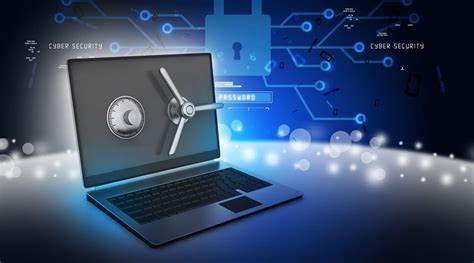Whether for research, assignments, or collaboration, a laptop is an indispensable student tool. If your laptop runs on Windows, protecting it is paramount, with many instruments requiring a fee. After checking out the unemployment rate for college graduates 2023, we’ve created this guide that will show you how to secure your device and safeguard your academic work for free since every penny counts when you’re a student.
Use Strong Passwords
Creating a robust password is the first line of defense for your laptop. Craft a unique combination of uppercase and lowercase letters, numbers, and symbols. Avoid easily guessable information, such as birthdays or names. Additionally, enable two-factor authentication for an added layer of security. Regularly update your password to enhance protection, and consider using a reputable password manager to generate and store complex passwords securely.
Keep Your Operating System Updated
Maintain the security of your Windows laptop by regularly updating the operating system. Microsoft frequently releases updates that address vulnerabilities. Staying current with these patches ensures your laptop has the latest defenses against potential cyber threats. Enable automatic updates or set regular reminders to check for updates manually. This proactive approach to system maintenance is fundamental to building a resilient security foundation.
Install Reliable Antivirus Software
Choose a reputable antivirus software and keep it updated. This software is a critical shield against malware, viruses, and other online threats. Schedule regular scans to ensure your laptop remains clean and secure from potential malicious attacks. Many antivirus programs offer additional features, such as real-time scanning and web protection, further enhancing your laptop’s security posture. Explore the settings of your antivirus software to customize its features according to your specific security needs.
Use a Firewall
Enable the built-in Windows Firewall or install a reliable third-party firewall. This tool monitors and controls incoming and outgoing network traffic, providing an additional layer of protection against unauthorized access and potential cyberattacks. Configure firewall settings to allow only necessary connections and block suspicious activities. Regularly review firewall logs to stay informed about network traffic, ensuring that your laptop’s defense mechanisms are actively preventing potential threats.
Be Cautious with Email Attachments
Exercise caution when dealing with email attachments, especially from unknown senders. Phishing emails often carry malware. Verify the sender’s authenticity before clicking on any links or downloading attachments to prevent falling victim to cyber threats. Be skeptical of unexpected emails requesting personal information or urgent action. Use an email filtering service to automatically detect and filter out suspicious emails, reducing the likelihood of encountering phishing attempts.
Secure Your Wi-Fi Connection
Protect your laptop by securing your Wi-Fi connection. Use a strong, unique password for your Wi-Fi network to prevent unauthorized access. Consider enabling WPA3 encryption if your router supports it. Avoid using public Wi-Fi networks for sensitive tasks unless you use a virtual private network (VPN) for added security. Regularly update your router’s firmware to address security vulnerabilities and ensure that your home network remains a secure environment for your online activities.
Backup Your Data
Safeguard your academic work by regularly backing up your important data. Utilize external hard drives or reliable cloud services to ensure that, even in the event of a lost or stolen laptop or hardware failure, your critical files remain safe and accessible. Automate the backup process to make it a seamless and consistent part of your laptop usage routine. Consider creating a backup schedule that aligns with your academic deadlines to ensure your most recent work is always protected.
Encrypt Your Laptop
Enhance your laptop’s security by encrypting the hard drive. Windows BitLocker, a built-in encryption tool, protects your data in case of laptop loss or theft. This adds an extra layer of security, ensuring your sensitive information remains inaccessible to unauthorized users. Configure BitLocker settings to suit your security preferences and recovery options. Regularly update your encryption keys and passwords to maintain the effectiveness of this protective measure.
Use a Standard User Account
Minimize security risks by avoiding everyday activities on an administrator account. Create a standard user account for routine tasks, limiting the impact of potential security threats, as many malware attacks require administrator privileges to install. Reserve administrator access for tasks requiring elevated permissions, implementing the principle of least privilege to enhance your laptop’s overall security posture.
Disable Unnecessary Services
Review the services and startup programs on your laptop, disabling any unnecessary ones. This not only improves performance but also reduces potential security risks associated with unnecessary services running in the background. Regularly audit your installed applications and remove any that are no longer needed. This proactive approach streamlines your laptop’s operation and ensures that only essential services are active, minimizing potential vulnerabilities.
Lock Your Laptop
Practice the habit of locking your laptop when stepping away. Set your laptop to automatically lock after a short period of inactivity or do it manually. This prevents unauthorized access and ensures the security of your device when you are not physically present. Implement additional authentication measures, such as a PIN or biometric verification, to strengthen your laptop’s defenses against unauthorized access attempts.
Educate Yourself on Cybersecurity Best Practices
Stay informed about the latest cybersecurity threats and best practices. Understand common scams and social engineering tactics to avoid falling victim to online fraud or phishing attempts. Ongoing education is crucial for maintaining a proactive approach to cybersecurity. Follow reputable cybersecurity blogs, attend webinars, and participate in forums to stay updated on emerging threats and effective security strategies. Share your knowledge with peers to create a collective awareness of cybersecurity practices within your academic community.
Conclusion
By implementing these comprehensive security measures, you can significantly reduce the risk of cyber threats and protect your Windows laptop as a student. Remember that cybersecurity is an ongoing process, so stay vigilant and regularly update your security measures to ensure a safe and secure digital academic journey. Consistent adherence to these practices will not only safeguard your academic work but also provide a strong foundation for responsible and secure digital citizenship.
